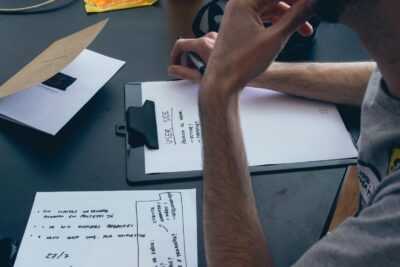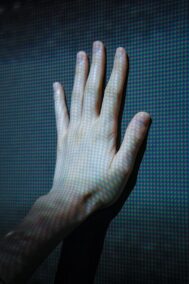Crafting Engaging and Intuitive User Experiences
This article delves into the importance of aesthetic and functional UX design and how businesses in the UAE and Saudi Arabia can leverage this synergy to create digital experiences that delight and engage users. In the digital realm, where user attention is a precious commodity, the significance of exceptional UX design cannot be overstated. User experience (UX) design is the art and science of creating digital products and services that are both visually appealing and functionally intuitive. It’s about striking a delicate balance between aesthetics and usability, ensuring that users are not only captivated by the design but also able to navigate and interact with the product seamlessly.
The Power of Visual Appeal
First impressions matter, and in the digital world, they are often formed within seconds. A visually appealing design can instantly capture users’ attention, evoke positive emotions, and create a lasting impression. In the context of UX design, aesthetics encompasses various elements, such as color schemes, typography, imagery, and layout. A well-crafted visual design can make a product or service feel more inviting, trustworthy, and professional, ultimately enhancing user engagement and brand perception. In the culturally rich and diverse landscape of the UAE and Saudi Arabia, incorporating regional aesthetics and design sensibilities can further resonate with local audiences and create a sense of familiarity and belonging.
Functionality: The Backbone of Usability
While visual appeal is undoubtedly important, it’s the functionality of a product or service that ultimately determines its success. A user interface (UI) that is intuitive, easy to navigate, and responsive to user actions is essential for a positive user experience. Functionality encompasses aspects such as information architecture, interaction design, and user flows. When a product functions seamlessly, users can effortlessly achieve their goals, whether it’s completing a purchase, finding information, or communicating with others. A well-designed UI not only enhances usability but also fosters user satisfaction and loyalty.
Striking the Balance: The Art of UX Design
The true art of UX design lies in finding the perfect balance between aesthetics and functionality. A visually stunning design that is difficult to use will quickly frustrate users, while a highly functional but uninspiring interface may fail to capture their attention. Successful UX design involves a deep understanding of user needs, behaviors, and expectations, combined with a creative vision and technical expertise. It’s about crafting digital experiences that are both beautiful and usable, where form and function seamlessly complement each other.
User-Centered Design: A Collaborative Approach
To achieve this balance, UX designers in the UAE and Saudi Arabia are increasingly adopting a user-centered design approach. This involves involving users throughout the design process, from initial research and concept development to prototyping and testing. By gathering feedback from real users, designers can validate their assumptions, identify pain points, and refine their designs to meet user needs. This collaborative approach ensures that the final product is not only visually appealing but also highly functional and user-friendly.
UX Design and Business Success
Investing in UX design is not just about creating beautiful products; it’s about driving business success. A well-designed product or service can increase user engagement, boost conversion rates, and foster brand loyalty. In the UAE and Saudi Arabia, where the digital economy is rapidly growing, businesses that prioritize UX design are more likely to thrive in the competitive marketplace. By delivering exceptional user experiences, companies can differentiate themselves from their competitors, attract and retain customers, and ultimately achieve their business goals.
The Future of UX Design: Embracing Emerging Technologies
As technology continues to evolve, so too does the field of UX design. Emerging technologies like artificial intelligence (AI), virtual reality (VR), and augmented reality (AR) are opening up new avenues for creating immersive and personalized user experiences. By embracing these technologies and incorporating them into their design process, businesses in the UAE and Saudi Arabia can stay ahead of the curve and deliver cutting-edge digital experiences that captivate and engage users.
Measuring the Impact of UX Design
To ensure the effectiveness of their UX design efforts, businesses need to measure the impact of their designs. This can be achieved through various methods, such as user surveys, usability testing, and analytics. By tracking key metrics like user engagement, task completion rates, and conversion rates, businesses can gain valuable insights into how users interact with their products and identify areas for improvement. This data-driven approach allows for continuous optimization and refinement of the user experience.
Building a UX Design Culture
Creating exceptional user experiences is not a one-time effort; it’s an ongoing process that requires a cultural shift within organizations. Building a UX design culture involves fostering a deep understanding of user needs, embracing a collaborative approach to design, and continuously iterating and improving based on user feedback. By embedding UX design principles into their DNA, businesses can create a sustainable competitive advantage and thrive in the digital age.























